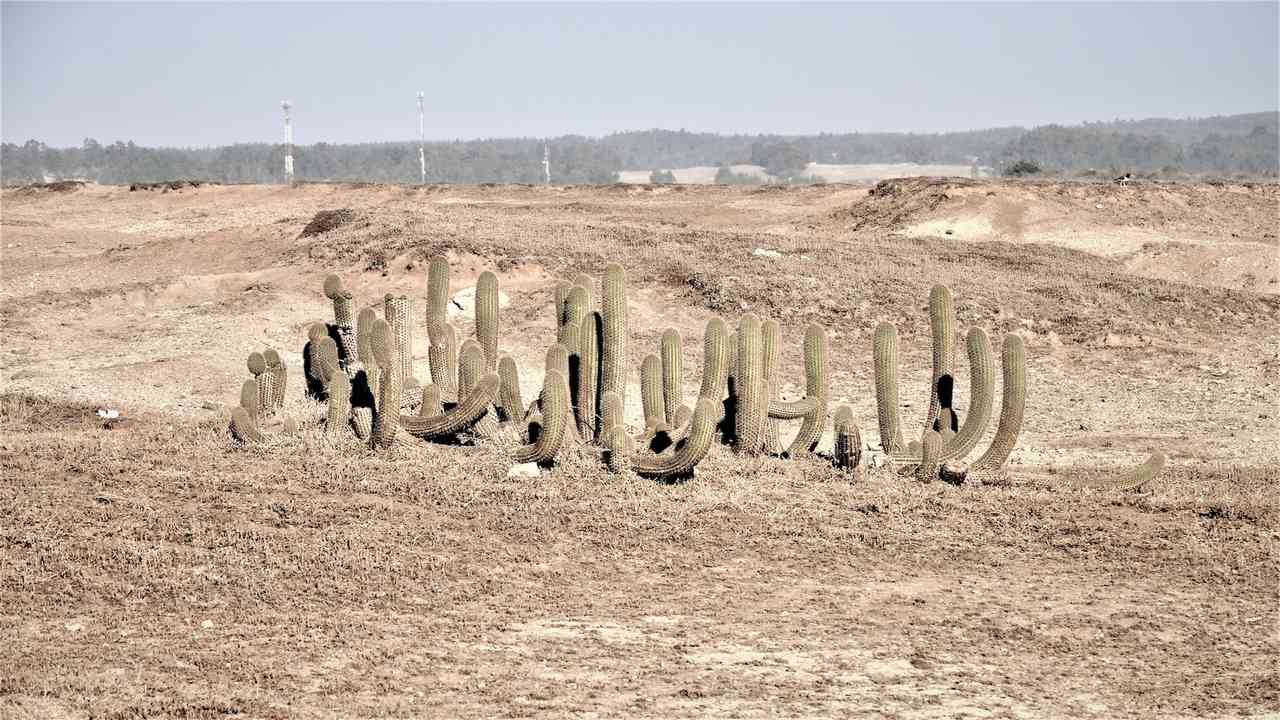 In a world where desert landscapes are synonymous with barrenness, a groundbreaking technology is defying nature's limits. Nanoclay, a liquid soil enhancer inspired by the Nile Delta's ancient fertility secrets, is turning arid sands into thriving farmland. From the United Arab Emirates to Egypt, this innovative solution is reshaping the future of agriculture, offering hope for sustainable food production in once-unyielding environments. Join us as we delve into the transformative power of nanoclay and its potential to revolutionize global food security.
In a world where desert landscapes are synonymous with barrenness, a groundbreaking technology is defying nature's limits. Nanoclay, a liquid soil enhancer inspired by the Nile Delta's ancient fertility secrets, is turning arid sands into thriving farmland. From the United Arab Emirates to Egypt, this innovative solution is reshaping the future of agriculture, offering hope for sustainable food production in once-unyielding environments. Join us as we delve into the transformative power of nanoclay and its potential to revolutionize global food security.
Nanoclay Revolutionizing Agriculture in Arid Regions
The innovative use of nanoclay in transforming barren desert landscapes into fertile farmland represents a significant breakthrough in sustainable agriculture. Inspired by the ancient fertility secrets of the Nile Delta, this liquid soil enhancer has demonstrated remarkable efficacy in arid regions like the United Arab Emirates. By infusing clay particles into local soils, nanoclay enhances water retention, nutrient availability, and soil structure, enabling the cultivation of crops in environments previously deemed unsuitable for agriculture. The successful application of nanoclay in desert farming not only addresses food security challenges but also offers a promising solution for sustainable land use practices in arid regions worldwide.
The company Desert Control, spearheading the development and commercialization of nanoclay technology, has played a pivotal role in driving this agricultural revolution. Through extensive research and field trials in diverse geographical locations, Desert Control has fine-tuned the nanoclay formula to suit varying soil compositions, ensuring optimal results in transforming unproductive desert lands into thriving agricultural ecosystems. The scalability and cost-effectiveness of nanoclay application hold the potential to revolutionize agricultural practices in arid regions, offering a sustainable alternative to traditional farming methods that rely heavily on water-intensive irrigation and soil amendments.
Environmental and Economic Implications of Nanoclay Adoption
The widespread adoption of nanoclay technology presents multifaceted environmental and economic implications for agricultural practices globally. By enhancing soil fertility and water retention capabilities, nanoclay offers a sustainable solution to combat desertification and land degradation, promoting ecosystem resilience and biodiversity conservation. Moreover, the reduced water usage associated with nanoclay application not only mitigates water scarcity challenges but also contributes to lowering agricultural water consumption, aligning with sustainable development goals focused on resource efficiency and environmental conservation.
In the context of economic viability, the cost-effectiveness of nanoclay application emerges as a critical factor influencing its adoption and scalability. While the initial start-up costs may be relatively higher, particularly in affluent regions like the United Arab Emirates, the long-term benefits of increased crop productivity, reduced water usage, and enhanced soil health position nanoclay as a cost-efficient investment in sustainable agriculture. Companies like Desert Control are actively exploring strategies to lower the cost of nanoclay treatment, aiming to make this innovative technology accessible to smallholder farmers in regions like sub-Saharan Africa, where agricultural productivity is hindered by land degradation and limited access to resources.
Synergies with Other Soil Recovery Techniques for Comprehensive Land Regeneration
In the quest for comprehensive land regeneration and sustainable agriculture, the integration of nanoclay with other soil recovery techniques such as biochar and vermiculite holds immense potential. While nanoclay primarily targets sandy soils to enhance fertility and water retention, biochar offers a complementary solution for enriching soil organic content and improving nutrient availability. The stable carbon structure of biochar acts as a long-term soil amendment, promoting soil health and enhancing crop resilience in degraded or nutrient-deficient lands.
Furthermore, the utilization of vermiculite, known for its water absorption properties, and polymer beads for targeted water retention in root zones complement the soil-enhancing capabilities of nanoclay. By combining these diverse soil recovery techniques, agricultural practitioners can implement holistic land regeneration strategies that address specific soil challenges, ranging from salinity issues to nutrient depletion. The collaborative application of nanoclay with biochar, vermiculite, and polymer beads exemplifies a synergistic approach towards sustainable land management, fostering ecosystem restoration and agricultural sustainability on a global scale.
Conclusion
In the realm of sustainable agriculture, the transformative potential of nanoclay in converting arid deserts into fertile farmland stands as a beacon of hope for global food security and land regeneration. With companies like Desert Control leading the charge, the environmental and economic implications of nanoclay adoption underscore its role in combating desertification, enhancing crop productivity, and promoting resource-efficient practices. By integrating nanoclay with complementary soil recovery techniques, a holistic approach to land regeneration emerges, offering a path towards sustainable agricultural practices worldwide. As we witness the dawn of a new era in desert farming, the legacy of nanoclay lies not only in its ability to nurture barren lands but also in inspiring a paradigm shift towards resilient and sustainable food production systems.